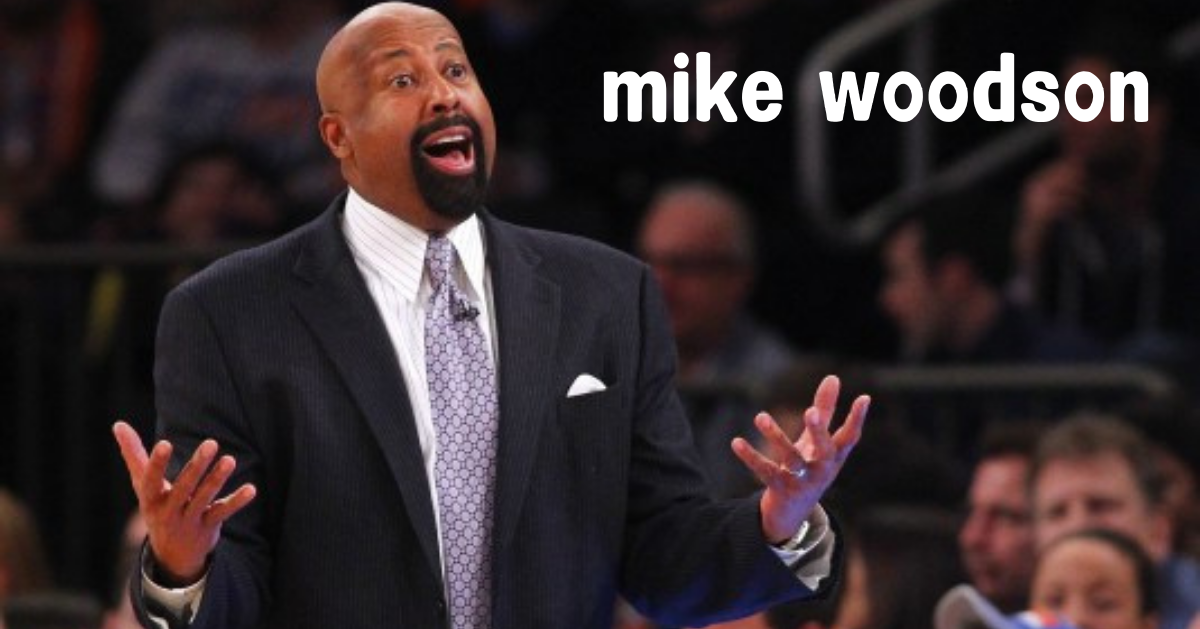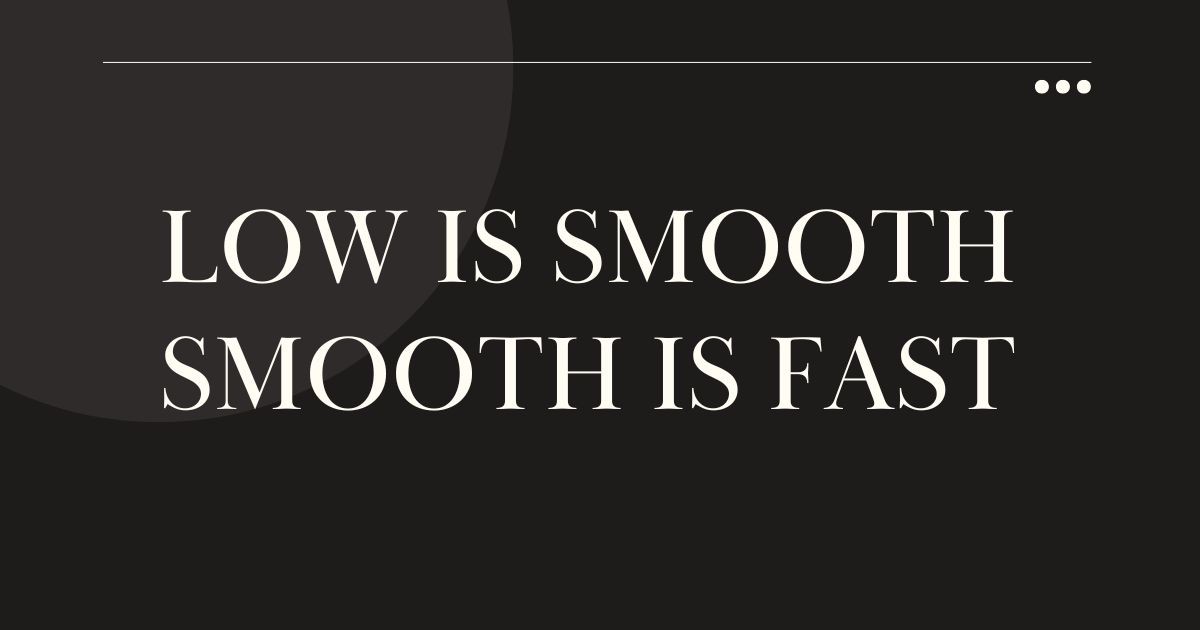General
Who is Mike Woodson? A Deep Dive into the Life and Career of an NBA Coach

Mike Woodson is a name that resonates with basketball enthusiasts worldwide. With a career that spans decades as both a player and a coach, he has made significant contributions to the NBA. Whether as a tough-minded defensive coach or a player who showed grit on the court, Woodson has left an indelible mark on the game of basketball.
Early Life and Education
Before becoming an NBA icon, Mike Woodson had a humble beginning. Born on April 24, 1958, in Indianapolis, Indiana, Woodson grew up in a neighborhood where basketball was more than just a game—it was a way of life.
Childhood and Family Background
Raised in a supportive family, Mike’s love for basketball blossomed early. His parents, who had a strong appreciation for sports, encouraged him to pursue his passion. Growing up in Indianapolis, a city with a rich basketball history, Mike was immersed in a culture where playing on the court was almost a rite of passage.
College Basketball Journey
Woodson attended Indiana University, where he played under the legendary coach Bob Knight. His time at IU was transformative, helping him refine his game and laying the foundation for his professional career. Woodson played as a shooting guard and was known for his solid defense and leadership on the floor.
Transition to Professional Basketball
After an impressive college career, Mike Woodson was selected by the New York Knicks as the 12th overall pick in the 1980 NBA Draft. It marked the beginning of his professional journey. While his rookie year didn’t see him make a huge impact, it didn’t take long for him to earn respect for his defensive prowess.
NBA Draft and Rookie Year
The NBA draft was a pivotal moment for Woodson. He entered the league with high expectations, joining a Knicks team that was in need of fresh energy. His rookie season was a learning experience, and Woodson began to understand the nuances of the NBA game, transitioning from college basketball to the pros.
Mike Woodson as a Player
Woodson played in the NBA from 1980 to 1991, and during that time, he carved out a solid career as a defensive-minded guard. Though his playing career wasn’t filled with individual accolades, his contributions to the teams he played for—primarily the New York Knicks, New Jersey Nets, and Cleveland Cavaliers—were essential.
Playing Career Highlights
Woodson’s biggest accomplishment as a player was his reliability and toughness. Known for his solid defense and leadership, he became an integral part of the Knicks’ squad during the 1980s. Though never an NBA All-Star, his work ethic and defense were key attributes that made him a respected figure on the court.
Mike Woodson’s Playing Style
Woodson’s playing style focused heavily on defense. He was a tenacious on-ball defender and had the ability to shut down some of the league’s top scorers. Offensively, Woodson wasn’t known for flashy moves but was rather a steady presence who contributed to his team’s success with grit and determination.
Woodson’s Coaching Career Beginnings
After retiring from playing, Mike Woodson shifted his focus to coaching, bringing his defensive mentality with him. His first coaching role in the NBA was as an assistant coach for the Milwaukee Bucks in the mid-1990s.
First Coaching Steps in the NBA
Woodson’s journey from player to coach wasn’t immediate, but his rise was steady. He started as an assistant coach with the Bucks, where he worked closely with veteran players and gained invaluable experience. Later, he took on similar roles with the Detroit Pistons and the Cleveland Cavaliers, further honing his coaching skills.
Assistant Coaching Roles
Woodson’s role as an assistant coach allowed him to learn from some of the best minds in basketball. Working under head coaches like Larry Brown and Rick Carlisle, Woodson absorbed critical lessons on how to lead a team. These experiences would prove instrumental when he finally earned his chance to become a head coach.
Mike Woodson’s Head Coaching Journey
Woodson’s first head coaching job came in 2004 when he took over the Atlanta Hawks. It was a turning point in his career.
Atlanta Hawks Era
Woodson’s tenure with the Atlanta Hawks lasted from 2004 to 2010. Under his leadership, the Hawks enjoyed moderate success, making several playoff appearances. His defensive-minded approach helped the team become more competitive in the tough Eastern Conference.
New York Knicks Tenure
In 2012, Woodson became the head coach of the New York Knicks. During his time with the Knicks, Woodson had his most successful run as a head coach, leading the team to a 54-win season and a second-round playoff appearance. His emphasis on defense and structure helped the Knicks become a formidable team during his tenure.
The Indiana Pacers Role
After his time with the Knicks, Woodson joined the Indiana Pacers as a consultant, where he worked on player development and team strategy. His knowledge of the game and his experience as a coach allowed him to make valuable contributions behind the scenes.
Mike Woodson’s Coaching Style and Philosophy
Woodson is known for his defensive coaching style, which emphasizes strong individual defense and team cohesion.
Defensive Strategies
As a coach, Woodson has always prioritized defense. He believes that defense wins games, and he instills this mindset into his players. His defensive schemes often involve aggressive on-ball pressure, switching on pick-and-rolls, and ensuring that the team communicates well on defense.
Offensive Mindset
While Woodson is primarily known for his defense, his offensive philosophies are also a key part of his coaching. He prefers a balanced approach, utilizing ball movement, spacing, and quick decisions to create open looks for his players.
Achievements and Impact in the NBA
Woodson’s impact on the NBA goes beyond his individual success as a coach. He has influenced the development of future coaches and players.
Notable Wins and Career Milestones
Woodson’s career boasts numerous wins, including some memorable playoff appearances with the Knicks. His 54-win season remains one of the highlights of his coaching career. He has also earned respect for his ability to develop players and get the best out of them.
The Influence on Future NBA Coaches
Woodson’s approach to coaching, particularly his emphasis on defense, has influenced several young coaches in the NBA. His mentorship and leadership have made a lasting impact on the league, and many of his former players have gone on to become successful coaches themselves.
Personal Life and Legacy
Mike Woodson’s legacy goes beyond basketball. His commitment to his family and his dedication to mentoring younger players have earned him a place in the hearts of fans and players alike.
Outside the Court
Off the court, Woodson is known for his philanthropic work and his strong family values. He has been involved in various community outreach programs and has consistently worked to give back to the community.
Mike Woodson’s Legacy in Basketball
Woodson’s legacy in basketball will be remembered not just for his coaching but for the values he instilled in his teams. His emphasis on discipline, hard work, and defense set a standard for future generations of coaches and players.
Conclusion
Mike Woodson’s career is a testament to perseverance, hard work, and dedication. From his early days as a player to his successful coaching career, he has continually demonstrated that success in the NBA is not just about talent but about discipline, strategy, and the ability to adapt. His impact on the game, both as a player and a coach, will be felt for years to come.
General
Nick Fuentes House Fire: Facts, Fallout, and Rumors

In recent weeks, online discussions have ignited with news surrounding Nick Fuentes and a reported house fire connected to him. As with most controversies involving the far-right commentator, the internet has been divided—some searching for facts, others fueling speculation. This article takes a deep dive into everything currently known about the alleged fire, how the story unfolded, and what impact it may have on Fuentes’ already polarizing reputation.
Who Is Nick Fuentes?
Nick Fuentes is a well-known political commentator and live streamer associated with the alt-right movement in the United States. Rising to internet notoriety through his “America First” podcast, Fuentes has long been a controversial figure due to his extreme views on race, immigration, and politics. He has been banned from several social platforms and payment services over the years, adding to his mystique and making any news about him instantly buzzworthy.
How the Fire Story First Surfaced
The story of the Nick Fuentes house fire didn’t break through mainstream media first. Instead, it emerged via online chatrooms, forums, and social media platforms. A few Twitter accounts posted photos and unverified details, claiming that Fuentes’ residence had caught fire. Within hours, screenshots of private Discord messages and video clips were circulating online, each offering conflicting accounts of the event.
Was It Really Nick Fuentes’ Home?
One of the biggest challenges in verifying this incident has been the absence of official confirmation. While many users pointed to the location and visual comparisons of known Fuentes backgrounds from his streams, no mainstream outlet has validated that the property damaged by fire belonged to him. Speculation abounded, but facts remained scarce. This lack of clarity fueled even more rumors across digital spaces.
Speculations About Arson and Motivations
Some online commentators were quick to suggest arson—implying the fire was deliberately set either as a targeted political act or an internal insurance ploy. Given Fuentes’ track record of courting controversy, these speculations found fertile ground. However, without police reports or fire department statements made public, such claims remain nothing more than internet gossip.
Fuentes’ Response to the Incident
What added more intrigue to the story was Fuentes’ own behavior. Initially, he made no public comment regarding the fire. Later, during one of his streams, he alluded to “trouble at home” and “haters trying to destroy me,” which many interpreted as vague references to the fire. However, he didn’t offer direct confirmation or denial. This evasive approach kept the rumor mill spinning even faster.
Impact on His Audience and Followers
Interestingly, the news of the fire energized Fuentes’ core fan base. Many took to social media defending him and blaming leftist groups for orchestrating what they believed was an attack. Some even launched online fundraisers, hoping to support Fuentes through what they perceived as an act of domestic terrorism. This rallying effect illustrates how deeply polarized his following is and how emotionally invested many of them are.
How the Opposition Reacted
On the flip side, critics of Fuentes used the incident as an opportunity for mockery and disdain. Memes surfaced within hours of the news breaking. Some accused him of orchestrating the event for attention or financial gain. Others pointed to it as a karmic moment, suggesting that his history of inflammatory rhetoric was catching up with him.
Online Misinformation and Echo Chambers
This incident is a textbook case of how misinformation spreads online. In the absence of hard facts, people filled the void with speculation. Screenshots without sources, photos lacking timestamps, and anonymous accounts became the bedrock of the fire story. Whether you believe it or not, the way the narrative spread shows how quickly public opinion can be shaped in our digital age.
Legal Implications and Investigations
As of now, no formal investigation reports have been released. If it turns out that arson was involved, and if Fuentes’ property was indeed targeted, this could lead to a legal case with significant implications. It could raise debates on political violence, free speech, and the line between protest and crime. But again, without verified documents, the legal angle remains speculative.
Historical Context: Public Figures and Property Damage
Nick Fuentes is not the first public figure whose home has become a topic of public interest. In the past, political commentators and celebrities alike have faced similar situations, some confirmed, others blown out of proportion. Often, these stories become symbols for larger cultural battles, far beyond the fire or incident itself.
Role of Independent Journalists and Investigators
Independent journalists have tried to track down the truth behind the house fire, but without cooperation from Fuentes or local authorities, information is limited. Some content creators have visited alleged locations or spoken to supposed witnesses, but these reports often lack the rigorous fact-checking standards required to be reliable.
How This Affects His Future Influence
Whether the fire actually occurred or not, the incident plays into the larger narrative of Nick Fuentes as a persecuted figure—a theme he leans on heavily. If spun the right way, this story could amplify his influence among sympathizers and help him claim victimhood in the culture wars. However, it also reinforces his notoriety among critics, keeping him in the spotlight.
Media’s Role in Amplifying Unverified Stories
Mainstream media’s silence on the issue might be strategic. Covering unverified claims can be risky. But their silence has also pushed the story deeper into fringe communities, where it becomes harder to correct or clarify. This gap between official media and online discourse allows echo chambers to thrive.
The Importance of Waiting for Verified Information
Events like this highlight the necessity of media literacy. It’s crucial not to jump to conclusions based on Twitter threads or viral videos. While curiosity is natural, responsible engagement with information means waiting for official confirmation before forming judgments. In a world ruled by viral narratives, patience is a rare but essential virtue.
Conclusion
The Nick Fuentes house fire story is a fascinating case study in modern internet culture. Whether the incident truly occurred or is just another episode in the ever-dramatic saga of an internet provocateur, it reminds us of the power of online speculation and the importance of verified information. Until more concrete details surface, the story remains a mix of myth, meme, and mystery.
FAQs
Did Nick Fuentes confirm the house fire?
No, Fuentes has not explicitly confirmed or denied the fire. He only made vague comments that fans interpreted as references.
Is there any official report on the house fire?
As of now, no police or fire department records have been publicly released to confirm the incident.
Could the fire have been an act of political violence?
Some speculate arson, but there’s no official evidence to support such claims at this time.
How did Fuentes’ followers react to the story?
Many rallied in support, viewing him as a victim and even creating fundraisers to help him.
What can we learn from this situation?
It underscores the need for caution when spreading unverified news and the importance of media literacy in the digital age.
General
Low Is Smooth Smooth Is Fast: Power of Controlled Action

The phrase “low is smooth, smooth is fast” has deep roots in tactical training, especially within military and law enforcement circles. It suggests that moving deliberately and with precision—rather than rushing—leads to greater efficiency and success. The idea is that when you move slowly and smoothly, you make fewer errors. And fewer errors lead to faster, more effective outcomes.
Why Slowing Down Leads to Greater Speed
It sounds contradictory, right? But slowing down enables your brain and body to align. Think of a sprinter: they don’t just bolt—they start from a calm, ready position. The more relaxed and focused the start, the more explosive and accurate the execution. This applies to any skill—from driving to coding to cooking. A calm mind avoids costly mistakes, saving time in the long run.
Adopting a Mindful Approach in High-Stress Situations
In stressful environments, instinct tells us to speed up. But that’s often when mistakes pile up. Taking a “low and smooth” mindset means managing your adrenaline and staying focused. It allows you to operate with clarity, not panic. Whether you’re defusing a literal bomb or handling a heated business negotiation, staying calm keeps you in control.
Application in Military and Tactical Training
This principle is taught in special forces training across the world. Soldiers practice clearing rooms slowly and methodically—not with wild speed, but smooth precision. A jerky, fast motion can create noise, attract attention, and lead to costly mistakes. Smooth movements reduce unnecessary noise, conserve energy, and minimize errors.
Everyday Life Benefits from the Philosophy
You don’t need to be in combat to benefit. The phrase applies to everyday tasks: preparing a presentation, driving in traffic, or even making your morning coffee. When you slow down, you notice details. You respond instead of react. You stay ahead by avoiding missteps.
Low and Smooth in Sports Performance
Athletes who embrace “low is smooth, smooth is fast” often find they outperform competitors. A basketball player who dribbles low and in control has better balance. A martial artist who moves fluidly can strike more effectively. It’s about combining technique with calm execution.
Creative Fields and Flow States
Writers, designers, and musicians benefit from steady pacing. Rushing creativity stifles ideas. Taking time to enter a “flow state,” where the work feels smooth and intuitive, yields far better results. When the process is smooth, the output feels fast and natural.
The Role of Muscle Memory
In physical tasks, moving slowly during practice builds muscle memory. Repeating actions with precision means your body learns them deeply. Then, when speed is required—like in an emergency—your body performs efficiently without conscious effort.
Avoiding Burnout by Embracing the Mantra
Moving fast all the time is exhausting. It leads to mental fatigue and burnout. By moving “low and smooth,” you pace yourself. You build sustainability into your work rhythm, reducing stress and increasing performance longevity.
Learning and Skill Development
Trying to learn something quickly often leads to shallow understanding. When you take your time, you absorb more. Think of a student who skims versus one who studies with focus. The slower student often retains more and performs better over time.
Leadership and Decision-Making
Strong leaders don’t make impulsive decisions. They gather facts, weigh consequences, and act decisively—but not hastily. Their “smooth” decision-making results in better outcomes and builds trust among teams.
Communication and Listening Skills
Effective communicators listen more than they talk. Instead of rushing to reply, they take time to understand. This deliberate approach builds rapport and ensures messages are clear and meaningful—saving time by reducing misunderstandings.
Time Management the Right Way
Ironically, trying to do everything fast leads to inefficiency. Multitasking, constant switching, and rushed efforts create messes that take longer to fix. Focusing on one task at a time, smoothly and calmly, gets things done right the first time.
Reducing Error Through Deliberate Movement
Whether it’s surgery, programming, or construction—rushed actions lead to mistakes. Deliberate movement minimizes errors. Correcting errors wastes time. Prevention, through smooth execution, saves it.
Mastery Over Time Through Consistency
The people who succeed are rarely the ones who sprint first. They are the ones who show up consistently, day after day, doing the work smoothly. Over time, this rhythm builds mastery. And mastery is always faster than chaos.
Mental Health and Emotional Stability
The smooth and steady mindset improves emotional resilience. You respond to challenges calmly. You stay grounded when others panic. That emotional control gives you a major edge—especially in volatile situations.
Technology and Efficiency Models
Even in automation, “smooth is fast” applies. Well-coded systems run smoothly, predictably, and quickly. Glitchy, rushed software slows everything down. The same applies to project management—smooth workflows beat chaotic hustle every time.
Parenting and Teaching With Patience
Parents and teachers who adopt a calm, deliberate approach have better outcomes. Screaming, rushing, or forcing kids leads to resistance. Speaking softly, moving slowly, and setting clear boundaries leads to respect and cooperation.
The Zen of Smooth Living
Philosophically, this mindset resembles Zen or Stoic teachings. Detachment, presence, and control over impulses enable you to flow through life. You respond, not react. You create harmony, not havoc. It’s a peaceful way to live faster.
Personal Growth Through Measured Steps
Personal development isn’t about massive overnight change. It’s about tiny, smooth shifts—daily choices. You build strength, confidence, and wisdom not through speed but by moving intentionally. And eventually, those measured steps turn into leaps.
Conclusion
“Lo’w is smooth, smooth is fast” is more than just a cool military phrase—it’s a life philosophy. In a world obsessed with speed, it reminds us that control, precision, and calm are the true drivers of performance. When we move with purpose, we make fewer mistakes, stay more balanced, and ultimately, reach our goals faster. So the next time you feel rushed, slow down. Smo’oth it out. That’s how you win—in anything.
FAQs
What does “low is sm’ooth, smooth is fast” mean?
It means that by staying low (calm, controlled, steady), your movements or actions become smooth, and that smoothness leads to greater speed and effectiveness over time.
where did the phrase originate?
The phrase is commonly used in military and tactical training, emphasizing precision and discipline over speed.
Can this mindset help with anxiety or stress?
Absolutely. Slowing down and focusing on smooth actions can help reduce panic and build emotional control, which is key for managing stress and anxiety.
How can I apply this principle in daily life?
Start by doing tasks more slowly and intentionally—whether it’s driving, cooking, or working. Focus on consistency rather than rushing.
Is this concept backed by science?
Yes, studies on muscle memory, cognitive performance, and flow states all support the idea that deliberate, smooth actions result in better long-term performance.
General
Amazon SES with Gmail: Seamless Email Integration Tips

Amazon Simple Email Service (SES) is a powerful cloud-based tool designed for sending transactional, marketing, and mass emails. Integrating Amazon SES with Gmail offers users the ability to send authenticated emails using their own Gmail interface but with the reliable infrastructure of Amazon. This setup helps enhance email deliverability, reduce spam rates, and maintain domain reputation while keeping the simplicity of Gmail.
Why Use Amazon SES Instead of Gmail’s SMTP
Gmail’s built-in SMTP server is convenient, but it comes with strict limitations. Daily sending limits, especially on free accounts, can hinder scalability. Amazon SES, on the other hand, is built for high-volume email sending. It provides advanced analytics, domain verification, dedicated IP addresses, and enhanced deliverability—all of which are critical for business communication. Using SES with Gmail combines Gmail’s familiar UI with Amazon’s robust backend.
Understanding Amazon SES Basics
Amazon SES allows sending emails through its SMTP interface or AWS SDKs. To use it with Gmail, you’ll be leveraging the SMTP credentials SES provides. After verifying your domain or email address in the AWS Console and completing a few configuration steps, you can link Gmail’s outgoing mail server to SES. You will need credentials, port numbers, TLS encryption, and identity verification for secure delivery.
Setting Up Your Amazon SES Account
Before using SES, you need to create an AWS account and activate SES. Once inside the SES dashboard, choose a region (like US East or EU West), verify your sending email/domain, and request to move out of the SES sandbox environment. This is important because sandbox mode has sending limitations and will not allow unrestricted emailing to external recipients.
Verifying Your Email Address in SES
To start sending emails through SES, you must verify either an individual email or an entire domain. For Gmail integration, verifying your Gmail address or custom domain is crucial. Amazon sends a verification link to the specified email. Once the link is clicked, the address is approved, and you’re one step closer to linking it with Gmail.
Generating SMTP Credentials in SES
Instead of using your AWS root credentials, SES requires a special SMTP username and password for secure transmission. In the SES dashboard, navigate to “SMTP Settings” and click “Create My SMTP Credentials.” This generates an IAM user with appropriate permissions and provides SMTP login credentials that will later be used in Gmail settings.
Switching Gmail to Use Amazon SES SMTP Server
In Gmail, go to Settings → Accounts and Import → “Send mail as.” Click on “Add another email address” and enter the email you’ve verified in SES. Choose to send through an external SMTP server, then enter Amazon SES’s SMTP endpoint (e.g., email-smtp.us-east-1.amazonaws.com), your SMTP username and password, port 587, and TLS encryption. Gmail will test and confirm the connection before allowing you to send through SES.
Overcoming Gmail’s Interface Restrictions
While Gmail provides a familiar environment, some of its settings can get in the way of seamless integration. If you face issues like authentication errors or message delay, ensure “Less secure apps” access is enabled, or consider using an App Password if 2FA is on. Google Workspace users have additional security policies that must be configured from the Admin Console.
Email Authentication: SPF, DKIM, and DMARC
For better deliverability, it’s essential to set up SPF, DKIM, and DMARC on your domain DNS. SPF tells receiving servers that Amazon SES is authorized to send on behalf of your domain. DKIM adds a digital signature to verify the email’s origin, while DMARC enforces your policies. These steps are crucial to avoid being marked as spam and to protect your domain reputation.
Benefits of Amazon SES with Gmail Integration
Using Amazon SES with Gmail brings the best of both worlds. You retain Gmail’s simplicity and organizational tools, while leveraging SES’s powerful email infrastructure. Benefits include increased sending limits, better deliverability, improved brand trust, and cost savings compared to other SMTP services. It’s a scalable solution for startups, marketers, and developers alike.
Sending Bulk Emails via Gmail and Amazon SES
Gmail wasn’t built for bulk emailing, but with SES in the backend, it becomes viable. Although the Gmail interface isn’t optimized for campaigns, integrating tools like Google Sheets add-ons or third-party plugins (e.g., Mail Merge) allows users to send personalized bulk emails. This method is great for newsletters, onboarding emails, or customer announcements.
Monitoring Email Performance in SES
Amazon SES includes basic analytics like bounce rates, complaint rates, delivery statistics, and click-through rates. You can monitor these via the SES console or push the data to Amazon CloudWatch for deeper insights. Tracking helps identify problem addresses, failed deliveries, and potential spam traps. It also allows continuous improvement of email strategy.
Handling Bounces and Complaints
Bounces and complaints can damage your sender reputation if unmanaged. Amazon SES allows you to configure notifications for both. By setting up SNS (Simple Notification Service), you can receive real-time updates about email failures or user complaints. These alerts help you react quickly—by removing bad addresses or revising content.
Limitations to Be Aware Of
While SES is powerful, there are still a few limitations. You can’t send emails without verifying addresses (or domains), initial sandbox restrictions can delay deployment, and Gmail’s own sending caps still apply when using the Gmail interface. Also, Gmail’s “Send mail as” feature limits the number of aliases and doesn’t support advanced scheduling or automation natively.
Security Considerations When Using SES with Gmail
Security should always be top priority when integrating services. Make sure to rotate SMTP credentials periodically, limit IAM permissions, and use secure ports with TLS. Don’t share your SMTP login details over insecure channels. Additionally, set up two-factor authentication in both your AWS and Gmail accounts to prevent unauthorized access.
Troubleshooting Common Errors
Common errors include “authentication failed,” “TLS not supported,” or “email not verified.” Ensure you are using the correct SMTP endpoint, valid credentials, and that your email/domain is verified. Double-check port settings (587 for TLS, 465 for SSL), and avoid sending to unverified addresses while in sandbox mode.
Conclusion
Integrating Amazon SES with Gmail unlocks a host of advantages for businesses and tech-savvy users who want more control over their email communication. It combines Gmail’s user-friendliness with Amazon’s email power and scalability. Whether you’re sending transactional emails, marketing content, or customer updates, this hybrid approach is reliable, efficient, and scalable—once it’s properly configured.
FAQs
Can I use Amazon SES with a Gmail account without a domain?
Yes, you can verify your Gmail address in SES and use it, but domain-level authentication offers better deliverability.
Is Amazon SES free to use with Gmail?
Amazon SES has a free tier, but charges apply beyond 62,000 emails per month or when used outside of EC2. Gmail remains free unless you’re using Workspace.
Why is Gmail showing “via amazonses.com” in sent emails?
This happens if DKIM and SPF aren’t properly set. Setting up these DNS records removes the “via” message and improves professionalism.
Can I schedule emails in Gmail using Amazon SES?
Not natively. However, using third-party tools like Google Sheets scripts or email marketing platforms can help schedule emails via SES.
What port should I use to connect Gmail to Amazon SES?
Use port 587 with TLS encryption for best compatibility. You can also use 465 for SSL or 25 for non-encrypted connections, although it’s less secure.
-

 Sports4 months ago
Sports4 months agoThe Ultimate Guide to Ski and Snowboard Equipment, Ski Equipment Rental, and Snowboard Equipment Rental
-

 Entertainment7 months ago
Entertainment7 months agoHulu Error Code Rununk13: A Complete Guide
-

 General6 months ago
General6 months agoStart-094: Unlocking Its Secrets and Understanding Its Power
-

 Entertainment5 months ago
Entertainment5 months agoSoaper.tv: A Comprehensive Guide to Your Streaming Companion
-

 Uncategorized4 months ago
Uncategorized4 months agoOceanofPDF: Free eBooks Source or Copyright Violation?
-

 Games5 months ago
Games5 months agoPizza Edition Games: The Ultimate Guide to Fun and Flavor
-

 Entertainment6 months ago
Entertainment6 months ago123movies: The Ultimate Guide to Free Online Movie Streaming
-

 Technology7 months ago
Technology7 months agoWhy SBCodez is the Go-To Resource for Aspiring Coders
